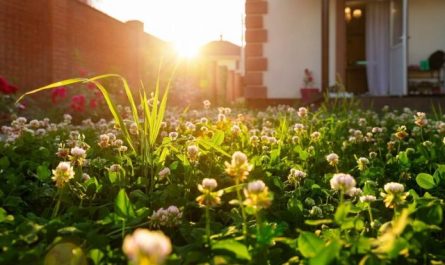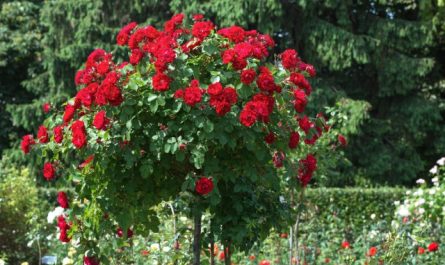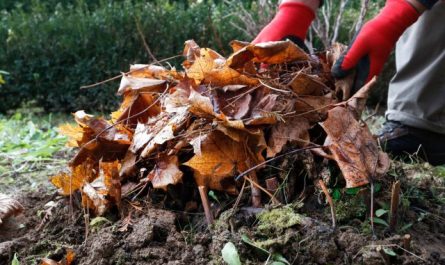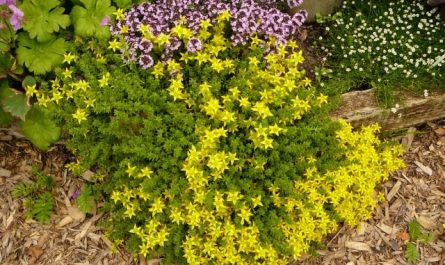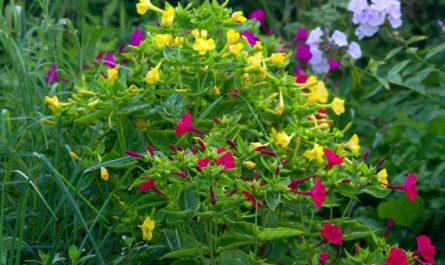The key to a perfect lawn is proper preparation. Mistakes made and preparatory steps that we brushed aside due to lack of time or other considerations result in problems. And it is far from certain that they can be solved even after several years. Let’s consider the main ones and figure out how to do it right.

How we see the ideal lawn
Decorative lawns are used on private plots:
- Parterre – low uniform monochromatic cover, consisting of no more than two components. Decorative, without a hint of weeds. Does not imply utilitarian use (maximum short-term rest).
- Ordinary – lawns for universal use, highly decorative. With dense turf and resistance to trampling, without weeds. Can consist of four types of grass.
- Garden and park lawns are heterogeneous in composition. They contain weeds, the number of which, if possible, is kept to a minimum. It is these “imperfect” lawns that can usually be seen on private plots.
- Meadow – do not act as an independent landscape object, but as protection against erosion or for greening large areas.
- Mauritanian – flowering “platforms” of annual low-growing plants that reproduce by self-seeding. They are created exclusively on poor soils and in a small area, since this is a very bright accent, a kind of unstructured flowerbed. Mowed only once, after the plants have dropped their seeds.

When we imagine a certain “correct” lawn, like from a picture, we see the first two options. Agrotechnical requirements and subsequent care are not very different (except for the Moorish lawn). But violations at the preparatory stage simply will not allow creating an even, high-quality covering, typical for parterre and ordinary lawns.
Neglect of preliminary analysis
Before you start choosing lawn grasses and pre-sowing work, you need to carefully analyze the conditions on the site. First of all, you need to determine the mechanical composition of the soil. Most lawn grasses prefer well-drained soils, so on heavy loams and clays, sanding and drainage will be required.
The chemical composition of the soil is no less important. The preferred pH is 5,5-7. Accordingly, lime will need to be added to acidic soil. Another significant factor is the groundwater level, which should not be higher than 50 cm. In areas located in lowlands, on swampy soils, you will have to forget about an ideal lawn. And finally, the degree of illumination of the place where you plan to sow lawn grasses. The choice of lawn mixture and subsequent care depend on this.
Poor quality cleaning of debris and weeds
Before pouring the fertile layer, it is necessary to make sure that there is no construction waste (at a depth of 30-40 cm) or weeds left under the site. Herbicides of continuous action help with the latter. If this is not done in advance, you will have to constantly fight the weeds mechanically.
Lack of vertical and horizontal planning
After removing the upper fertile layer, on the basis of which we will prepare the final substrate, it is necessary to carry out vertical planning and leveling of the microrelief. The slope angle of the site is brought to values no more than 30 degrees. To do this, the soil from a higher “point” is moved to the lower site. At the same time, a minimum slope of 1-2 degrees should always be present for natural water drainage.

It is equally important to remove all small irregularities. Otherwise, in their place, depressions will form, in which moisture will accumulate. Or bumps will appear, which can damage the lawn mower. And when such hummocks are cut off during mowing, bald spots will appear. Before using the roller, the soil is pre-moistened, and then thoroughly rolled 1 or 2 times.
Poor preparation of soil and site
Only after leveling is the prepared soil mixture laid. The thickness of the fertile layer should tend to 30 cm.
The ideal soil mixture is 2:1:1:
- turf soil (removed top layer)
- bottom peat
- sand.
Double superphosphate is added on top of the laid soil at a rate of 36 g/m2 and raked in. For better mixing of all components, the soil is plowed to a depth of 30 cm. The procedure is carried out with a cultivator in two tracks: from north to south and perpendicularly – from east to west. Then, using a special disc attachment, harrowing is carried out to a fraction the size of a pea. At the end, roll with a roller and water abundantly (fine-drop irrigation).
Failure to meet deadlines
It is better to carry out site preparation activities in advance. The site for the lawn prepared in the current season is sown in the next one. In extreme cases, the minimum required waiting time is 2 weeks. Such a time lag is needed so that the weed seeds contained in the purchased soil have time to germinate before sowing the lawn. To speed up the process, the site can be covered with film.

Lawn grass is sown when the soil warms up to +5-6. If there is no thermometer, the indicator is the burst birch buds. In the middle zone, this is usually mid-April, in more southern regions – March, and in the northwest – early May. Sowing can be done until the end of August – mid-September.
Wrong choice of lawn mixture
When choosing a lawn mixture, you need to carefully read the composition. The basis of lawn mixtures is short-rhizome cereals that form the most dense turf. Such a lawn holds the load well, is resistant to trampling and mechanical damage during mowing, and is quickly restored. Most often, bluegrass, bent grass, fescue and ryegrass act as components of lawn mixtures.
1. Meadow bluegrass (poa pratensis)
Forms a dense turf, the number of grass blades per 1 m2 is 10000-15000 pcs. Light-loving, winter-hardy, moderately demanding to fertility. Withstands two-week drought and flooding. Resistant to trampling. Can be used for any type of lawn, but cannot be planted alone – it grows very slowly.

2. Thin bentgrass (agrostis tenuis)
Record holder for grass cover density: 30000 shoots per 1 m2. Undemanding. Tolerates trampling very well. Like meadow bluegrass, it grows very slowly.

3. Red fescue (festuca rubra)
Forms the most powerful turf of all cereals. Grass density is 15000-23000 pcs. per 1 m2. Needs well-drained, light soils. Drought-resistant. Grows at an average rate. Used in any lawns.

These are the champions among all cereals, the basis of the basics. Besides them, you can choose:
- narrow-leaved bluegrass, flattened bluegrass (cannot be mixed with others, has a distinctly bluish tint), oak forest bluegrass, marsh bluegrass and common bluegrass;
- white bentgrass (suitable for peat soils), dog grass and creeping bentgrass;
- meadow fescue (wide leaf blade, better not to mix with anything).
The red fescue subtype with glaucous shoots (festuca rubra L. ssp. arenaria) is also better used separately.
What should not be in the mixture
If the lawn mixture contains Welsh fescue, sheep fescue or reed fescue, it is better not to buy such a mixture. These species quickly form hummocks, which spoil the lawn and prevent mowing. Pasture ryegrass grows very quickly and is included in the main composition of mixtures in Europe and the USA, but in most of our country it is not frost-resistant. In addition, this is an aggressive cereal. The maximum content of ryegrass seeds should not exceed 10%.
Failure to comply with sowing technology and standards
To achieve uniform seeding and, accordingly, an equally even and beautiful lawn over the entire area, it is worthwhile to carry out pre-sowing preparation. To do this, you can take a plot (outside the lawn) of 1 m2 in size, sow it testly, remembering the seed consumption, and take the result as a sample. When sowing the lawn, you can adjust the amount.
The main plot is divided into the same squares and sown manually in two tracks. Approximately 70% of the standard at the first stage and 30% at the second, going perpendicularly. Before sowing, the seed mixture must be thoroughly mixed.
To prevent birds and insects from carrying away the seeds, you need to quickly bury them in the soil to a depth of 1-2 cm and roll them. Then add a layer of peat 2-3 cm, if the peat is dry, roll them again. The peat layer creates a greenhouse effect and promotes rapid germination of seeds. After this, carry out abundant (to puddles) fine-drop watering. In the future, the soil is kept constantly moist.
Mistakes when mowing
Mowing a young lawn
Lawns are mowed when the grass reaches a height of 10-15 cm. It is important to mow before the grass blades lie down, since it will be difficult to restore the quality of the lawn cover later. A young lawn reaches the desired height on average in 1,5 months, although the exact time depends on weather conditions and the growth rate of specific cereals.
It is highly undesirable to use a lawn mower in the first year of the lawn’s life. In order not to damage the still very weak turf, it is worth giving preference to hand tools. The mowing height is not less than 5 cm, the last mowing is no later than mid-September.
Mowing a mature lawn
The first time a mature lawn is mowed in the season is around the second half of May. In more southern and more northern regions, the timing may shift by 2-4 weeks. Usually, the mow is carried out at a height of 5 cm, the last one – at a level of 3-5 cm at a temperature above 0.

To make the lawn look more even, it is better to alternate the directions of mowing (north-south, then east-west), and after mowing, go over it with a fan rake. The frequency of mowing is once every 1-2 weeks.
What to mow with
It is important to choose the right tool and keep the blades sharp. Inexpensive rotary lawn mowers provide average quality, but are easy to maintain. The best quality mowing is provided by lawn mowers with cylindrical blades and front lawn mowers. But to sharpen the blades, you will need professional help. Trimmers and brush cutters allow you to mow in hard-to-reach places, but are not suitable for the main area of a large lawn. It is almost impossible to ensure a perfectly even mowing.
Lack of fertilizers
Without sufficient fertilizers, any lawn covering loses its decorative effect. Growth rates slow down, grass blades become more brittle, turn pale, and moss develops on acidic soils.
The basis of the fertilizer, double superphosphate, is applied at the pre-sowing stage. It is advisable to apply additional fertilizer after each mowing.
Standard per 1 m2:
- nitrogen – 18 g,
- phosphorus — 24 g,
- potassium – 18 g.
Another option is three main feedings:
- After the snow melts and the soil warms up, apply a complex fertilizer containing nitrogen, phosphorus and potassium.
- In the second half of June – complex with increased potassium content.
- Before frosts, approximately in mid-September, apply phosphorus and potassium.
Finally, you can use encapsulated complex fertilizer. This fertilizer gradually releases nutrients over 9 months, so one spring feeding is enough.
Fixing problems
To restore the color of a faded lawn, add 10 g of ammonium nitrate and potassium chloride to 2 liters of water. This fertilizing can be done at any time until the end of August. The appearance of moss also signals a lack of nitrogen. To eliminate moss, sprinkle the affected area with a mixture of 2 parts sand and 1 part urea.
Poor water regime
The correct water regime includes not only regular and timely watering, but also the drainage of excess moisture. On heavy clay soils, drainage must be organized at the pre-sowing stage. To do this, not only the upper fertile layer is removed, but also about 20 cm additionally to accommodate the drainage layer. The soil is compacted, geotextile is laid, and on top of that – a layer of crushed stone mixed with sand.
Watering of the lawn is mandatory after each mowing. It is better to carry out the procedure in the evening hours, or before 9 am. Take any water, except directly from the well and water supply. Watering should be fine-droplet and uniform, which is ensured by selecting the right sprinklers. It is better to use rotary or oscillating ones. Water abundantly, until puddles form.
Excessive trampling
You can’t walk on a young lawn in the first year. As for mature lawns, they should be used for their intended purpose. Ideal, even parterre lawns are not intended to be walked on constantly. If there is a regular route through such a lawn, for example, to a gazebo, a path must be provided and laid at the pre-seeding stage.
Activities that are often neglected
In addition to the most obvious procedures, lawns also need other equally important ones:
- Every spring after the snow melts and after mowing, the lawn is combed with a fan rake, removing debris. This procedure not only makes the lawn more aesthetically attractive, but also promotes the access of oxygen, moisture and nutrients.
- On heavy, wet soils, aeration is a must. The problem can be recognized by slow growth or lodging to the height of the cut. The soil surface is pierced with a pitchfork or specialized devices, increasing its permeability.
- Every spring, to “sink” the roots, the lawn is rolled with a roller, but without overdoing it, so as not to cause harm.
- In winter, people do not walk on the lawn. But in cold weather, when thaws occur, it is necessary to regularly break up the crust, under which the lawn can rot.
- To ensure active growth of turf, natural renewal and durability, soiling is carried out once every 3-5 years. After mowing, a mixture of humus, fertile soil and sand in a ratio of 2:1:4 with the addition of superphosphate is scattered over the lawn. It is better to carry out this procedure in the summer.

